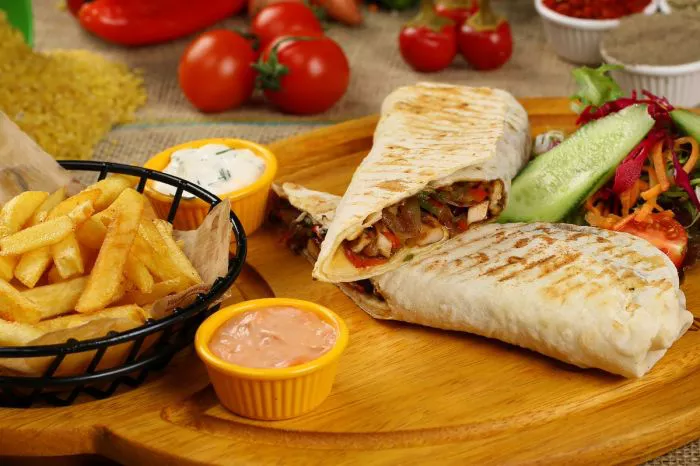Jack in the Box, a beloved fast-food chain known for its wide array of tasty offerings, has garnered a loyal following over the years. Among its menu items, one particular favorite stood out: the crispy and flavorful potato wedges. However, to the dismay of many fans, Jack in the Box made the surprising decision to discontinue its potato wedges in 2021, leaving customers wondering why. Let’s unravel the mystery behind the disappearance of Jack in the Box’s potato wedges and explore the possible reasons behind this decision.
1. Menu Simplification
One of the most common reasons why fast-food chains discontinue certain menu items is to simplify operations and streamline efficiency. Over time, menus can become cluttered with a plethora of options, leading to longer wait times, increased complexity in the kitchen, and higher costs associated with inventory management. By trimming down the menu and focusing on core offerings, restaurants like Jack in the Box can optimize their operations and provide a better overall dining experience for customers. Unfortunately, this often means saying goodbye to beloved menu items like potato wedges that may not align with the brand’s strategic priorities.
2. Cost Considerations
The decision to discontinue potato wedges may also be driven by cost considerations. Producing and serving potato wedges requires additional ingredients, equipment, and labor compared to other menu items. From sourcing potatoes and seasoning to cooking and packaging, each step in the process incurs expenses that can add up over time. As fast-food chains face pressure to maintain profitability in a competitive market, they may need to make tough decisions about which menu items to keep and which ones to cut based on their financial viability.
3. Shifting Consumer Preferences
Another factor that may have influenced Jack in the Box’s decision to discontinue potato wedges is shifting consumer preferences. In recent years, there has been a growing demand for healthier and more nutritious food options among consumers, driven by concerns about health, sustainability, and ethical sourcing. Potato wedges, with their deep-fried preparation and high calorie and fat content, may no longer align with the evolving tastes and values of health-conscious consumers. As a result, Jack in the Box may have opted to remove potato wedges from its menu in response to changing consumer preferences and market trends.
4. Supply Chain Challenges
Supply chain challenges, such as fluctuations in ingredient availability, quality issues, and transportation disruptions, can also impact a fast-food chain’s ability to offer certain menu items. Potatoes, the main ingredient in potato wedges, are subject to factors like weather conditions, crop yields, and market prices that can affect their availability and cost. If Jack in the Box encountered difficulties in sourcing high-quality potatoes at reasonable prices or faced logistical challenges in transporting them to its restaurants, it may have decided to discontinue potato wedges rather than continue to deal with supply chain uncertainties.
5. Limited Popularity or Sales
Ultimately, the decision to discontinue potato wedges may have been driven by their limited popularity or sales relative to other menu items. Despite being a fan favorite among some customers, potato wedges may not have achieved the level of sales or profitability that Jack in the Box desired. If potato wedges were not meeting sales targets or contributing significantly to the company’s bottom line, it would make sense for Jack in the Box to reallocate resources and focus on promoting menu items with greater appeal and revenue potential.
6. Feedback and Market Research
Customer feedback and market research play a crucial role in shaping the menu offerings of fast-food chains like Jack in the Box. By analyzing sales data, conducting surveys, and monitoring social media channels, restaurants can gain valuable insights into consumer preferences, trends, and behaviors. If Jack in the Box received consistent feedback indicating waning interest or dissatisfaction with potato wedges, it may have used this information to inform its decision to discontinue the item. Similarly, market research may have revealed opportunities to introduce new menu items or promotions that better resonate with customers and drive sales.
7. Room for Innovation
Discontinuing potato wedges may also create opportunities for Jack in the Box to innovate and introduce new menu items that capture the interest and appetite of customers. With the fast-food landscape constantly evolving and competition intensifying, restaurants must stay nimble and adapt to changing consumer tastes and trends. By regularly refreshing its menu with innovative and crave-worthy offerings, Jack in the Box can keep customers engaged and excited about its brand, driving traffic and sales in the process.
8. Brand Strategy and Differentiation
Ultimately, every menu decision made by a fast-food chain like Jack in the Box is guided by its brand strategy and commitment to differentiation. In a crowded marketplace, it’s essential for restaurants to carve out a distinct identity and value proposition that sets them apart from competitors. By carefully curating its menu and focusing on items that resonate with its target audience, Jack in the Box can strengthen its brand identity and build customer loyalty over time. While discontinuing potato wedges may disappoint some fans, it’s ultimately a strategic decision aimed at maximizing the brand’s long-term success and relevance in the fast-food industry.
Conclusion
In conclusion, the discontinuation of potato wedges by Jack in the Box in 2021 may have been driven by a combination of factors, including menu simplification, cost considerations, shifting consumer preferences, supply chain challenges, limited popularity or sales, feedback and market research, opportunities for innovation, and brand strategy and differentiation. While the absence of potato wedges may be felt by some loyal customers, it’s ultimately part of Jack in the Box’s ongoing efforts to evolve and stay competitive in a dynamic and ever-changing market landscape. As the fast-food industry continues to evolve, who knows what exciting new menu items Jack in the Box has in store for its customers in the future.

